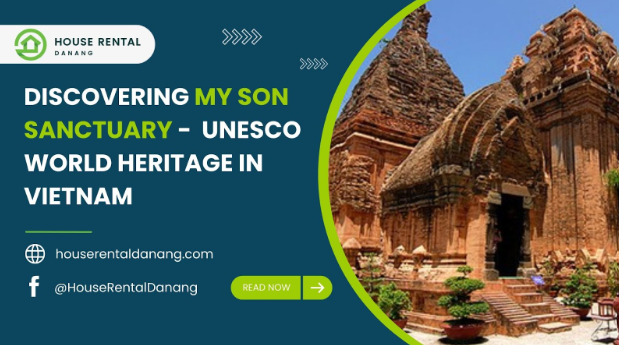
My Son Sanctuary is an ancient temple complex located in the Duy Xuyen District of Quang Nam Province, Vietnam. Nestled within a mountainous region, this UNESCO World Heritage Site comprises a series of impressive red-brick temples that were constructed between the 4th and 13th centuries CE. The sanctuary served as a significant religious and political center for the Champa Kingdom, which thrived in Central Vietnam during this period. The temples are primarily dedicated to the Hindu god Shiva, reflecting the spiritual origins of the Champa culture, which was heavily influenced by Indian Hinduism in the southwest of Da Nang.
Historical Background
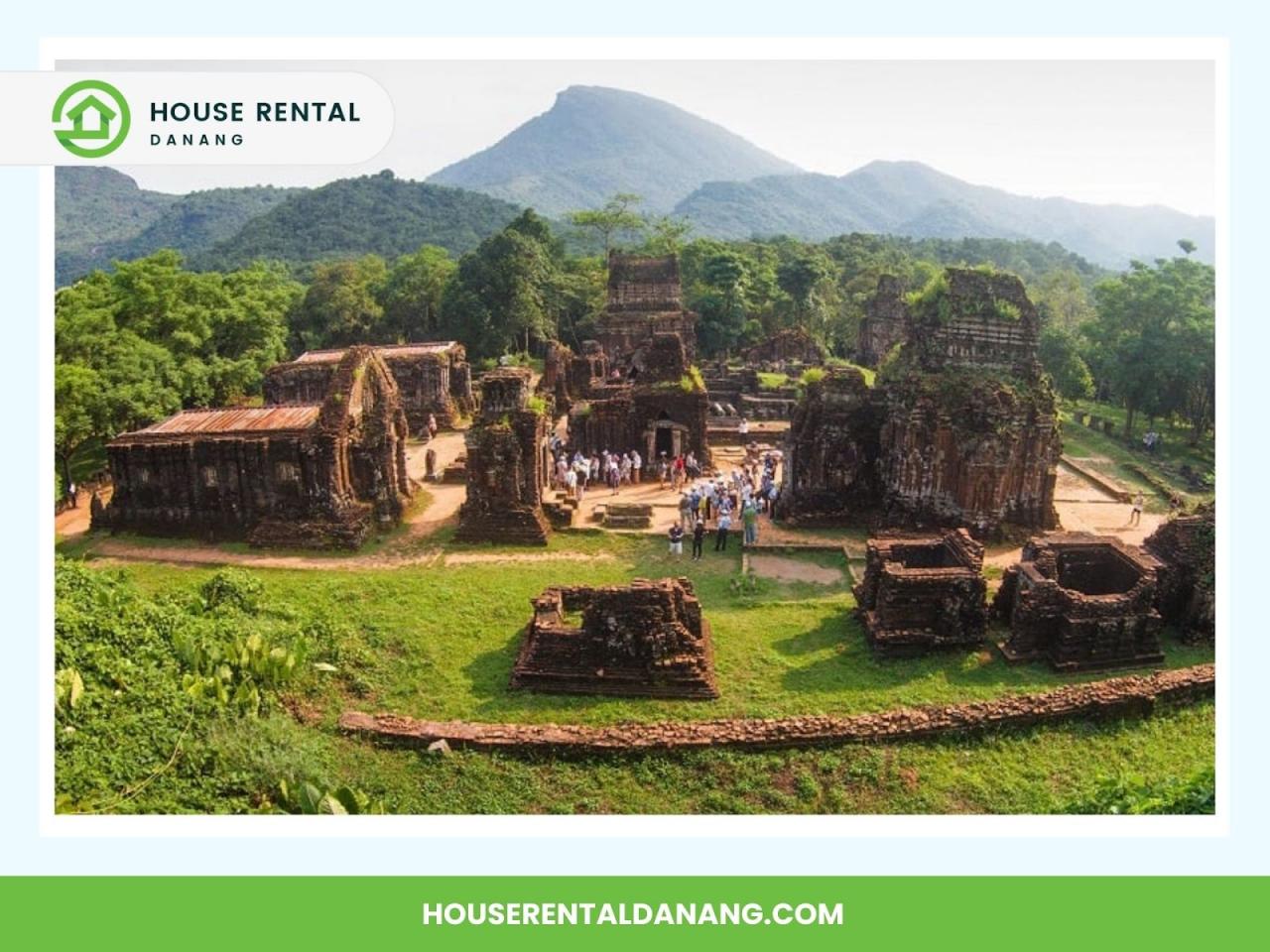
The Champa Kingdom, established around the 2nd century CE, was a collection of independent city-states along the coast of what is now Vietnam. The My Son temples and Cham temple were built by the Cham kings, beginning with King Bhadravarman in the 4th century, and they continued to develop until the late 13th century. This period marked the height of Champa civilization, characterized by its unique architectural styles and rich cultural traditions with sacred mountain and tower temples.
Key historical events impacting My Son Sanctuary include its rediscovery by French archaeologists in the late 19th century, which brought international attention to the site. Additionally, during the Vietnam War, the area suffered significant damage due to military activities, leading to the destruction of many structures. Restoration efforts have since been undertaken to preserve the remaining temples and their intricate carvings, which are vital to understanding the history and culture of the Cham people. Today, My Son Sanctuary stands as a testament to the architectural and artistic achievements of the Champa civilization, drawing visitors from around the world to explore its ancient ruins and rich heritage.
Architectural Styles
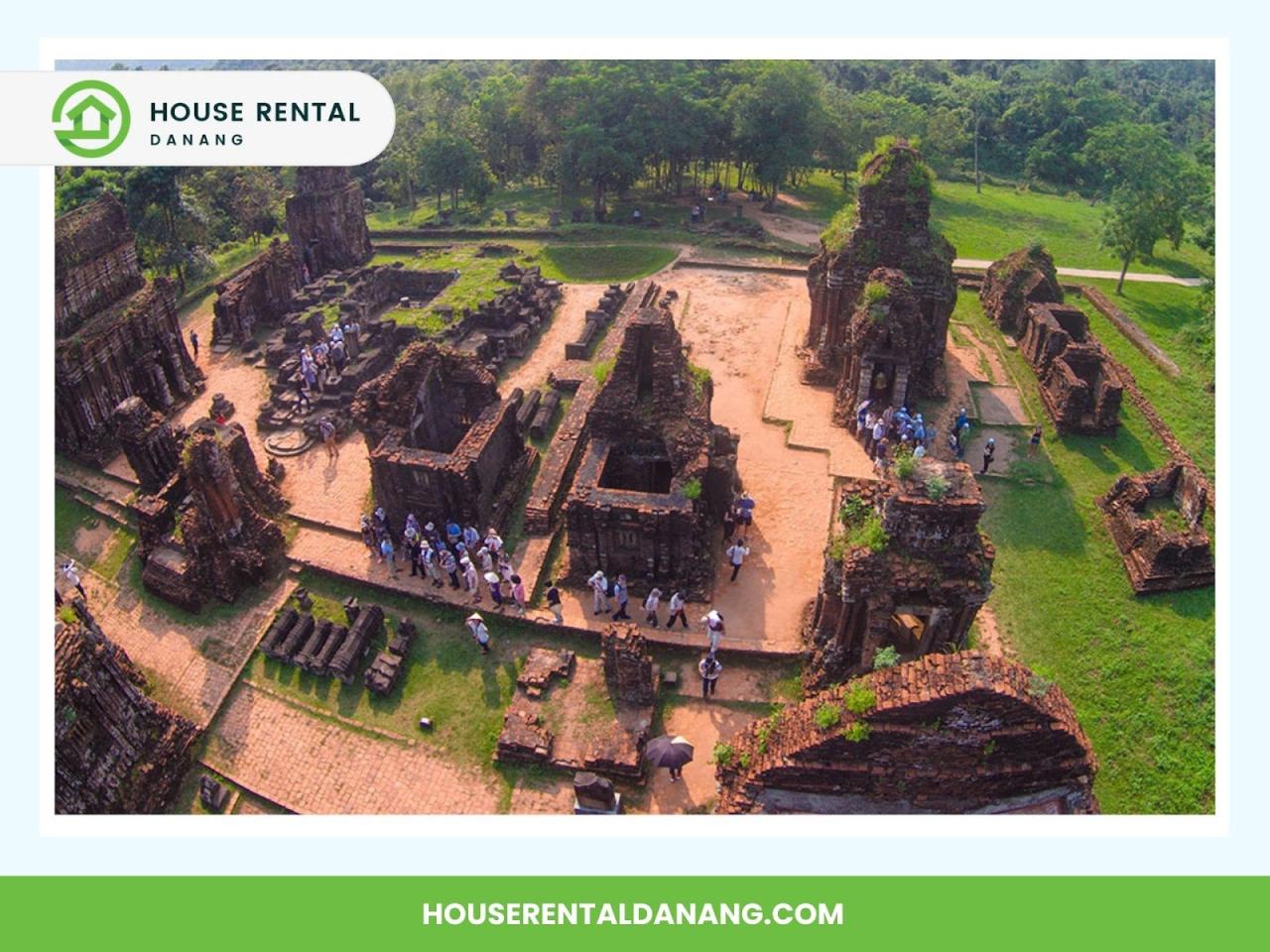
The architectural and artistic significance of My Son Sanctuary is profound, reflecting the rich cultural heritage of the Champa Kingdom through its unique temple structures and artistic expressions.
My Son Sanctuary showcases a variety of architectural styles that evolved over the centuries, primarily influenced by Hinduism. The temples are constructed using red bricks that were skillfully fired and assembled without the use of cement or mortar, a technique that has allowed many structures to endure despite the ravages of time and conflict. This method of construction not only highlights the engineering prowess of the Cham people but also contributes to the aesthetic appeal of the temples, with their reddish hues contrasting beautifully against the surrounding greenery.The temple structures are typically divided into three main components:
- Base: Represents the mortal world.
- Body: Symbolizes the spirit world.
- Top: Often shaped like offerings, representing the connection between the divine and the earthly realm.
The architectural layout includes a series of towers and sanctuaries, each dedicated to different deities, primarily Shiva, reflecting the religious practices of the Cham civilization. The temples are arranged in a way that creates a harmonious relationship with the natural landscape, often facing east towards the rising sun, which is significant in Hindu cosmology.
Deities and Artifacts
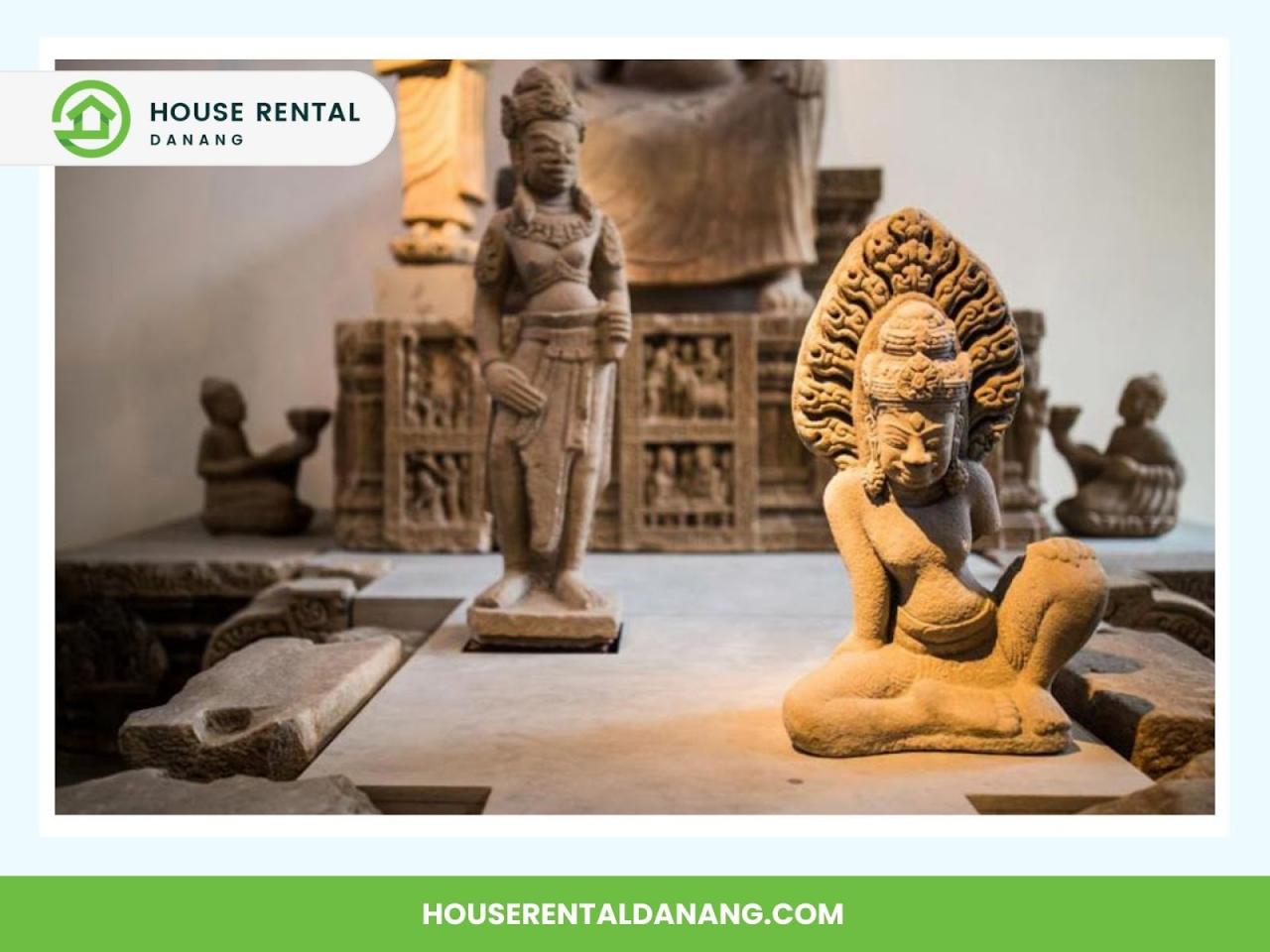
The temples at My Son are primarily dedicated to Hindu deities, with a strong focus on Shiva, who was worshiped in various forms. The presence of Linga, a representation of Shiva, is prominent throughout the sanctuary, serving as a focal point for worship and ritual practices.Notable artifacts discovered at the site include intricately carved sandstone reliefs depicting scenes from Hindu mythology, as well as statues of Apsaras (celestial dancers) that illustrate the artistic sophistication of the Cham people. These sculptures not only serve a decorative purpose but also convey religious narratives, showcasing the intertwining of art and spirituality in Champa culture.
Overall, My Son Sanctuary stands as a testament to the architectural ingenuity and artistic expression of the Champa civilization, encapsulating centuries of history, culture, and religious devotion within its ancient walls. The sanctuary remains a vital link to understanding the spiritual and cultural landscape of Vietnam’s past.
Visiting My Son Sanctuary
There are several options for getting to My Son Sanctuary from nearby cities like Hoi An and Da Nang:

Tours from Hoi An or Da Nang
Booking a tour is one of the most convenient ways to visit My Son Sanctuary. Many hotels and tour operators in Hoi An ancient town offer day trips to the site with a tour guide, often including transportation, entrance fees, and a guide. Tours typically depart early in the morning to avoid crowds and take advantage of the cooler temperatures.
Self-Guided by Motorbike or Car
Renting a motorbike or car and driving to My Son yourself is another popular option, especially for those looking for more flexibility. The journey from Hoi An takes approximately 1 hour along well-paved roads through the picturesque countryside. Taxis are also available, but can be more expensive.
Best Time to Visit
The best time to visit My Son Sanctuary is during the dry season, from February to April. During these months, temperatures are moderate, humidity is lower, and there is less likelihood of rain interrupting your visit. Arriving early in the morning, shortly after the site opens at 6:30 AM, is ideal to beat the heat, humidity, and crowds that tend to arrive later in the day.
Entrance Fees and Opening Hours
As of 2024, the entrance fee to My Son Sanctuary is 150,000 VND (approximately $6.20 USD) for adults and 30,000 VND for children aged 5-15. Younger children enter for free. The site is open daily from 6:30 AM to 5:30 PM, including during holidays. Visitors should plan to spend 2-3 hours exploring the temple complex and nearby museum, monument, and My Son relics. By visiting during the dry season, arriving early in the morning, and taking advantage of the various transportation options, travelers can make the most of their experience at this UNESCO World Heritage Site and gain a deeper understanding of Vietnam’s rich cultural heritage.
UNESCO World Heritage Status
My Son Sanctuary’s designation as a UNESCO World Heritage Site in December 1999 underscores its outstanding universal value as a cultural and historical landmark. The site is recognized for its unique architectural and artistic contributions, which reflect the spiritual origins of the Champa civilization rooted in Indian Hinduism. The criteria for this recognition include its representation of a significant cultural tradition, its architectural uniqueness, and its ability to illustrate the evolution of human settlement and cultural development in the region from the 4th to the 13th centuries CE.
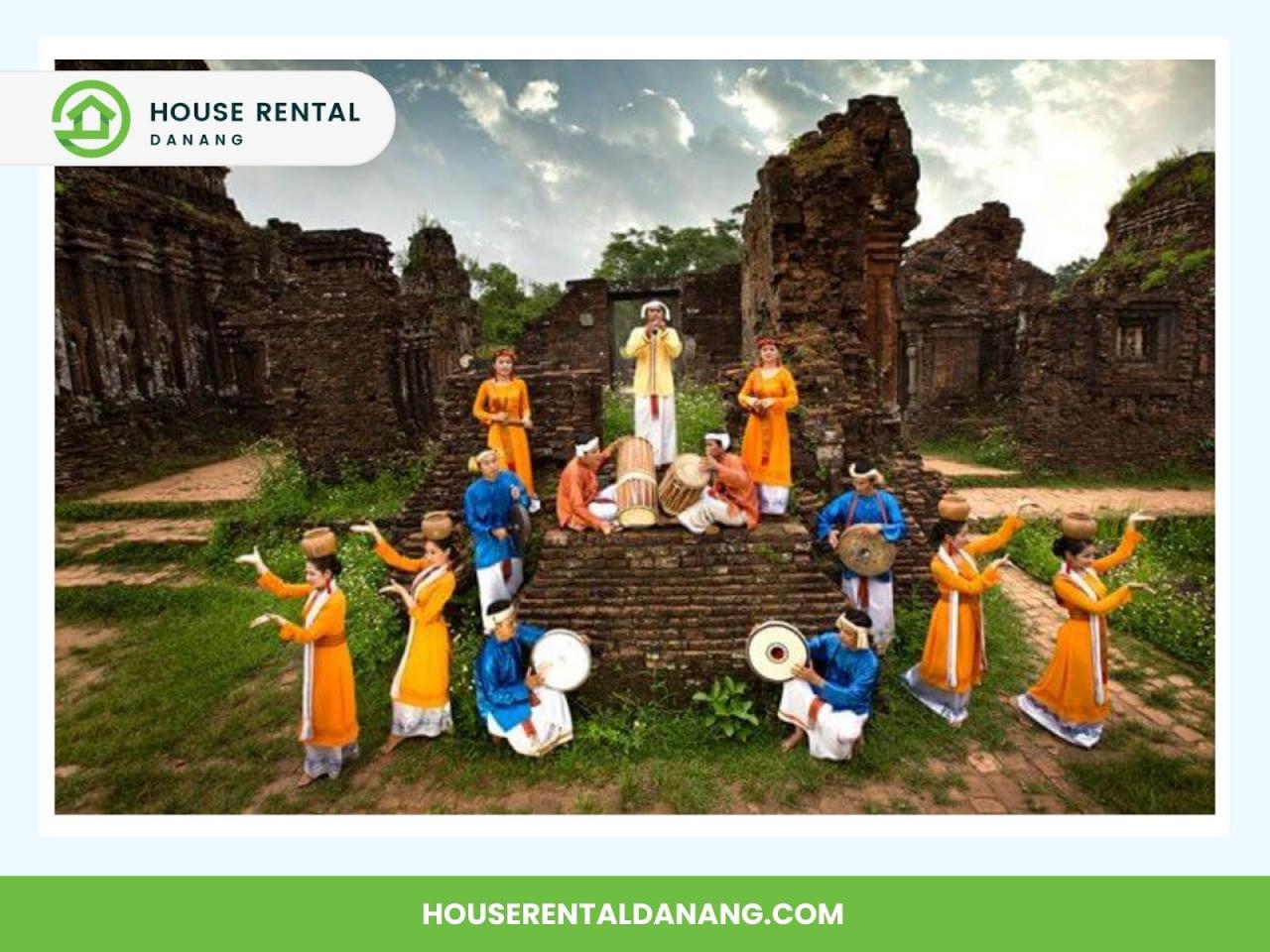
Conservation Efforts and Challenges
Conservation efforts at My Son complex have been ongoing, focusing on the restoration and preservation of the remaining structures, many of which have suffered damage from natural disasters and the impacts of war. The site encompasses over 70 structures, with only about 20 still standing in relatively good condition. Restoration projects aim to stabilize and protect these ancient temples, which are constructed from fired bricks without the use of mortar, showcasing the advanced engineering skills of the Cham people.
However, challenges persist, including environmental factors such as erosion, vegetation overgrowth, and the effects of climate change. Additionally, the site’s historical significance means it attracts a large number of tourists, which can lead to wear and tear on the structures. Ongoing efforts involve careful monitoring, restoration work, and community engagement to ensure the site’s preservation for future generations.
Cultural Importance
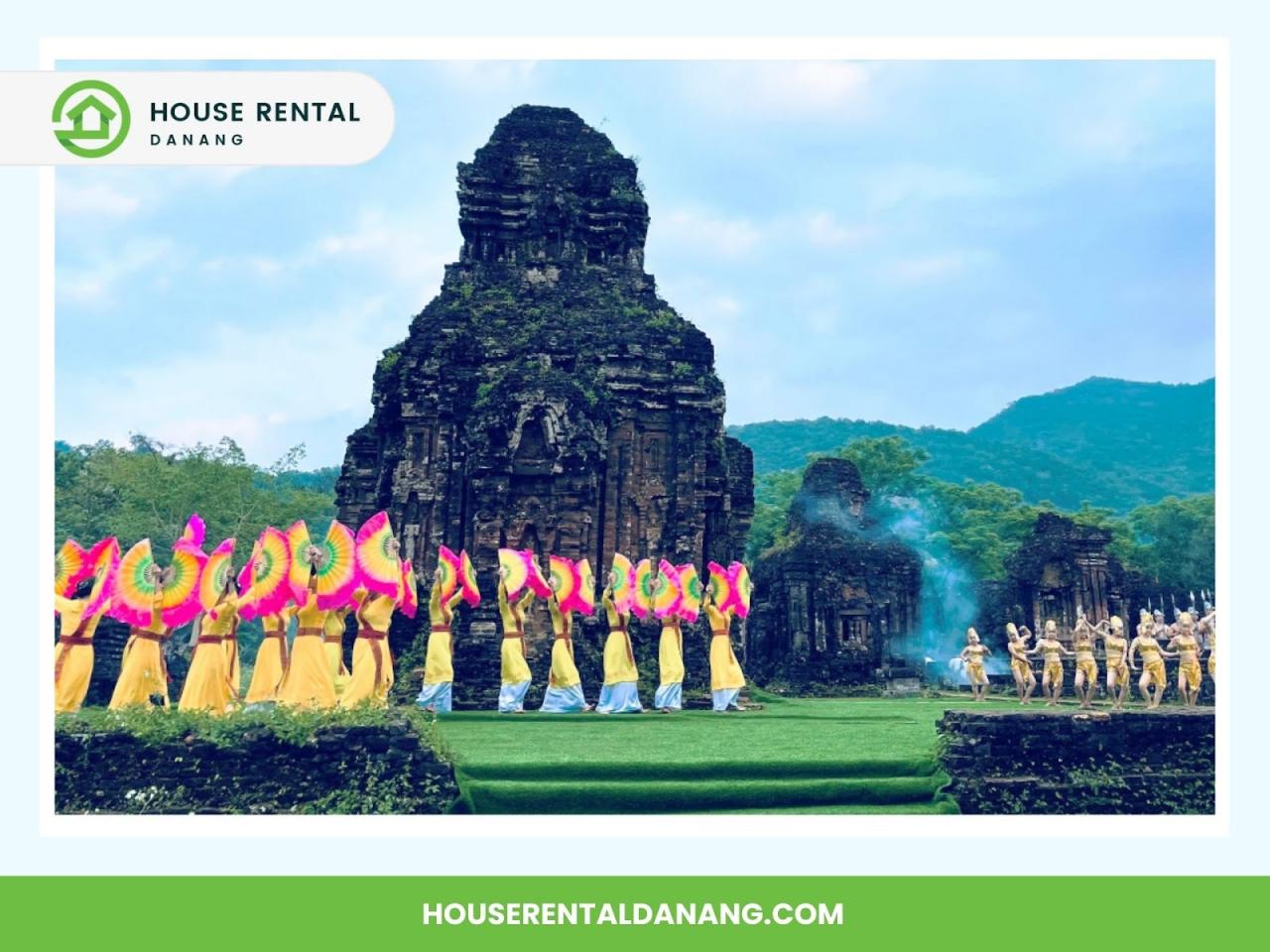
My Son Sanctuary Vietnam holds immense cultural and religious significance for the Champa people, serving as a sacred site for the worship of Hindu deities, particularly Shiva. The temples were not only places of worship but also served as royal tombs and centers of political power during the height of the Champa Kingdom. The sanctuary reflects the spiritual beliefs and artistic expressions of the Cham civilization, which have been integral to the political and religious identity of Vietnam.
In contemporary Vietnamese culture, My Son Sanctuary continues to be a site of interest and reverence. Various festivals and cultural events are held at the sanctuary, including traditional Cham dances and ceremonies that celebrate the heritage of the Cham people. These events not only highlight the ongoing relevance of the sanctuary in the cultural landscape of Vietnam but also serve to educate visitors about the rich history and traditions of the Cham civilization. The performances, such as the Apsara dance, draw inspiration from the intricate carvings found within the temples, allowing visitors to experience the living culture of the Cham people.
Practical Tips for Visitors
When visiting My Son Sanctuary, keep the following in mind:
- Wear comfortable walking shoes as there is some distance to cover within the site.
- Bring plenty of water and snacks, as there are limited food and drink options once inside the sanctuary. A reusable water bottle is recommended to reduce plastic waste.
- Wear clothing that covers your shoulders and knees out of respect for the sacred nature of the site. Avoid revealing or overly casual attire.
- Bring sun protection like a hat and sunscreen, as much of the site is exposed to the elements.
- Visit during off-peak hours, such as early morning or late afternoon, to avoid crowds and enjoy a more serene experience exploring the temples.
- Consider combining your visit with a stop at the nearby My Son Museum, which provides helpful context and information about the site before your arrival.
One personal anecdote that enhanced my experience was arriving at sunrise. The golden light filtering through the jungle canopy created a magical atmosphere as I wandered among the ancient brick towers. The lack of crowds allowed me to fully immerse myself in the tranquility and mystery of the site.
Conclusion
My Son Sanctuary is a must-visit destination for anyone interested in Vietnam’s rich cultural heritage and architectural wonders. The temple complex, with its unique Cham style and Hindu influences, stands as a testament to the ingenuity and spirituality of a civilization that thrived in this region centuries ago.Whether you are a history buff, a photography enthusiast, or simply someone who appreciates the beauty of ancient ruins, My Son Sanctuary will leave a lasting impression.

